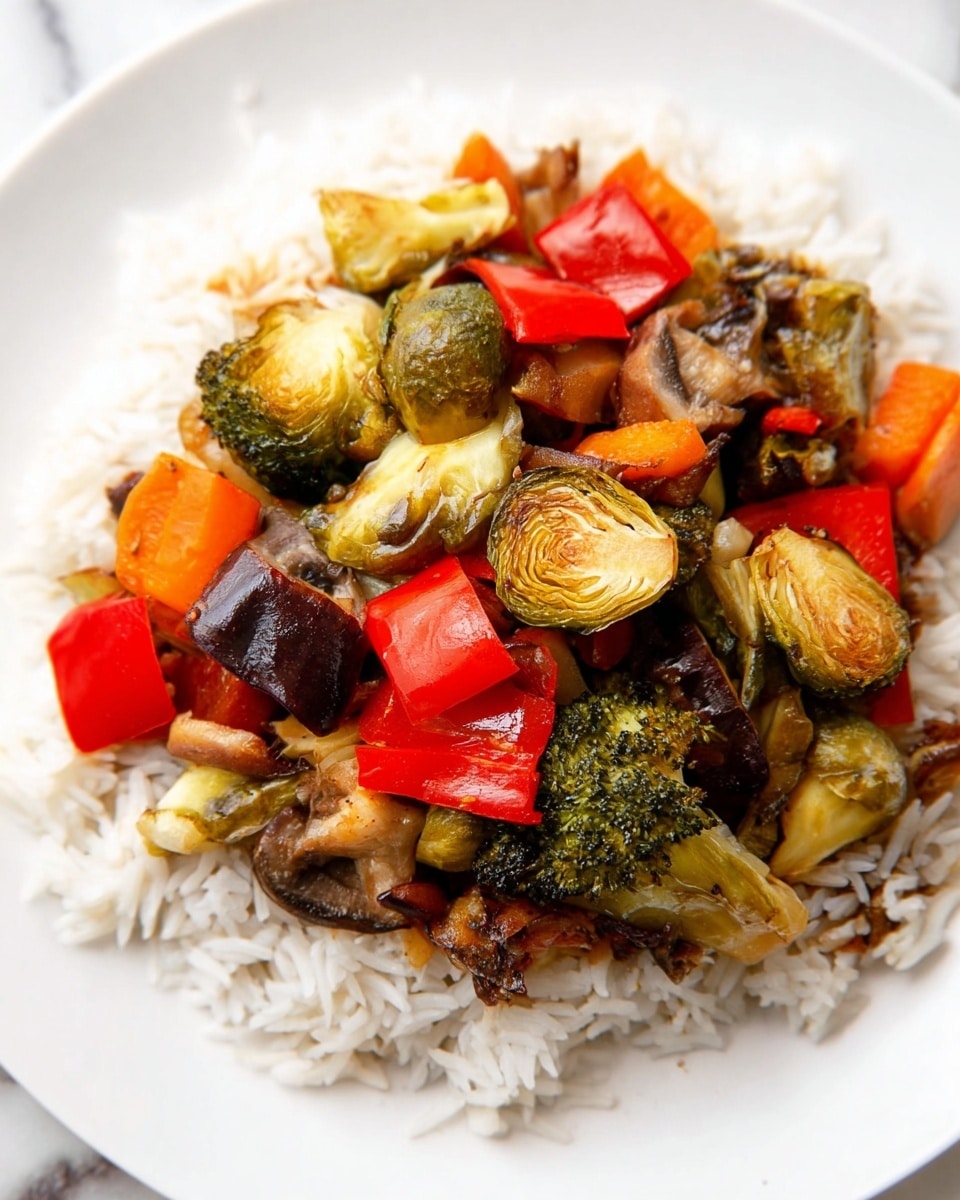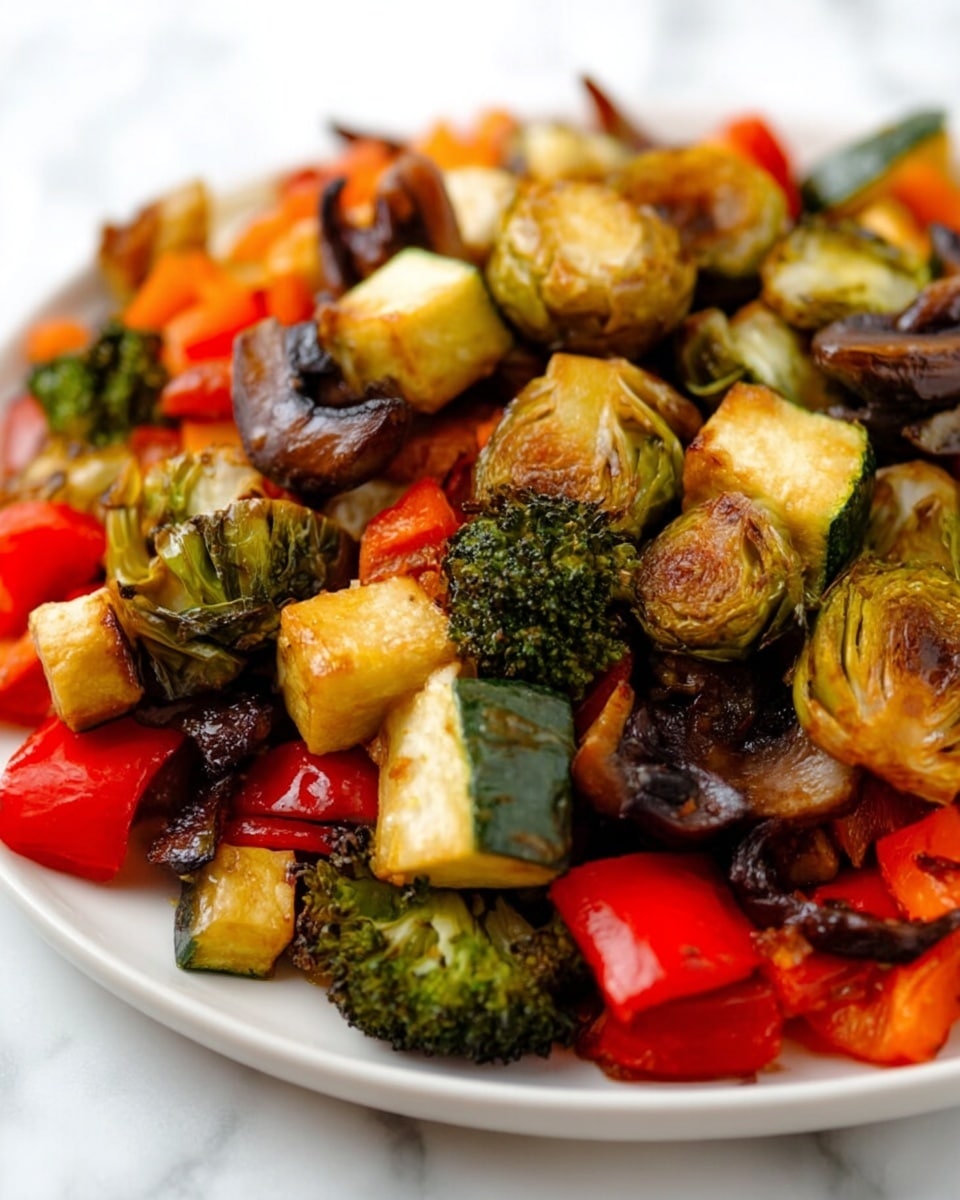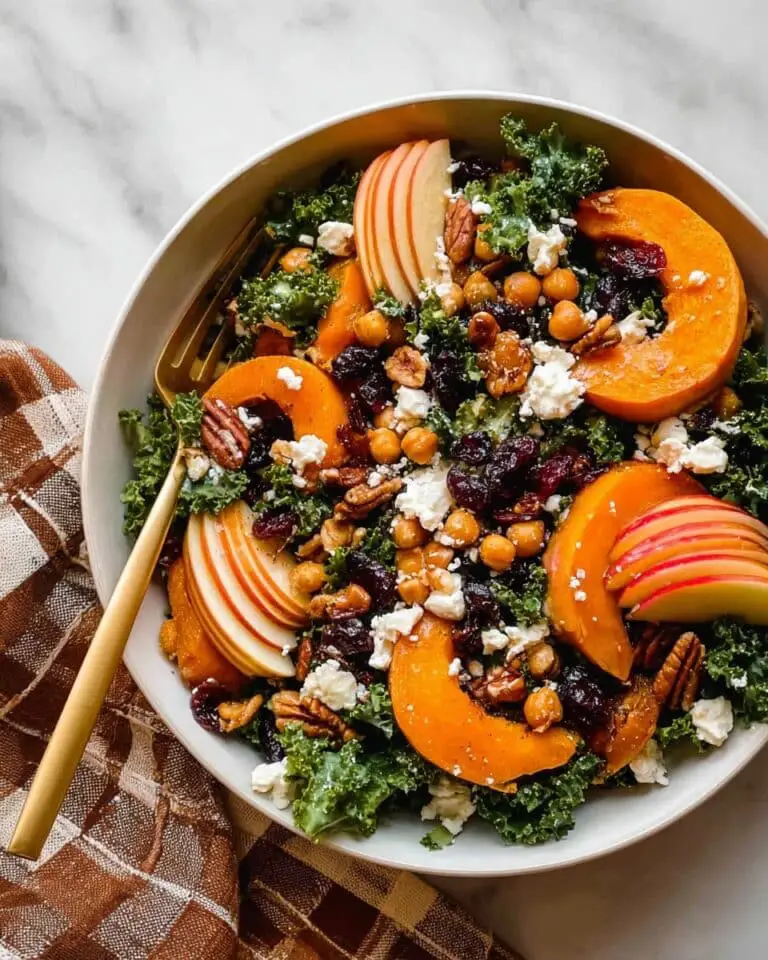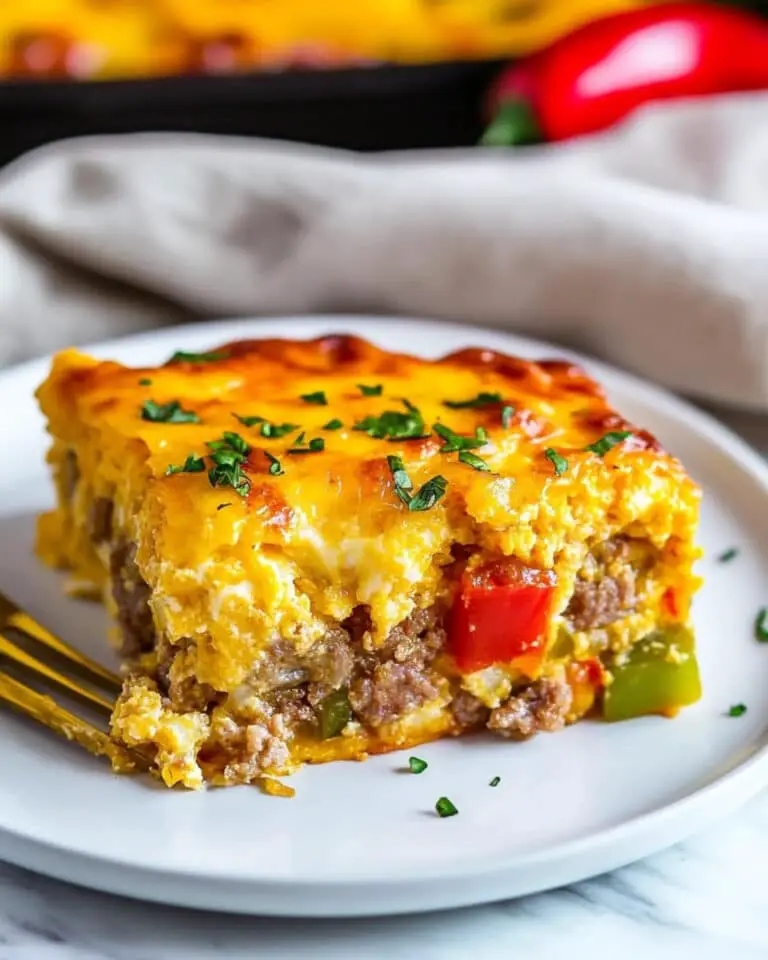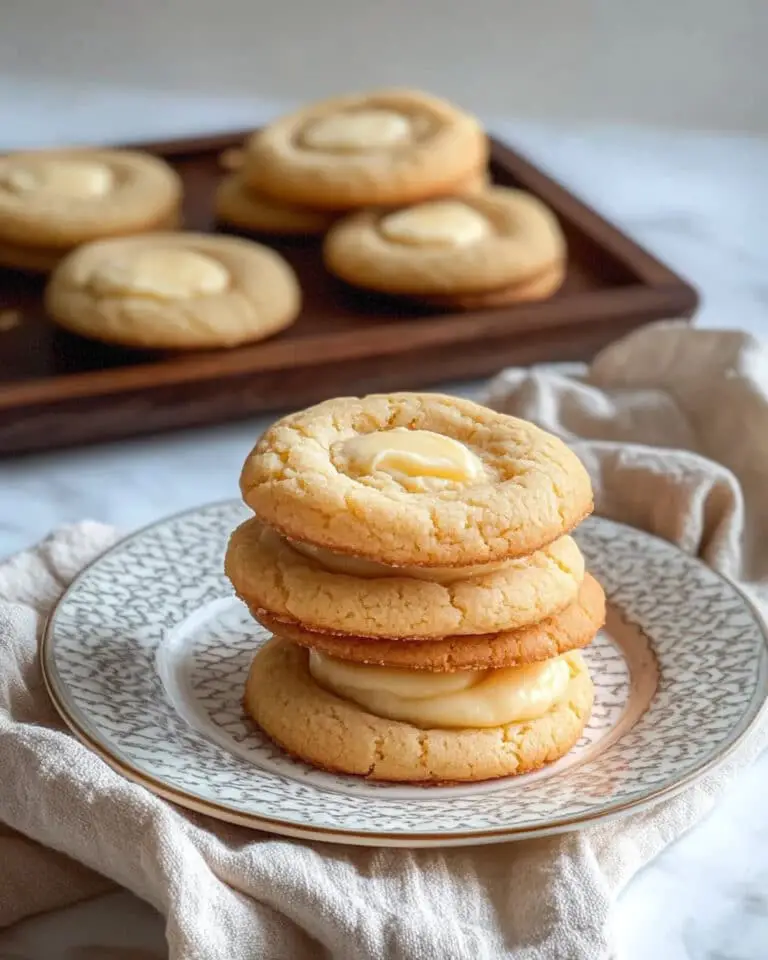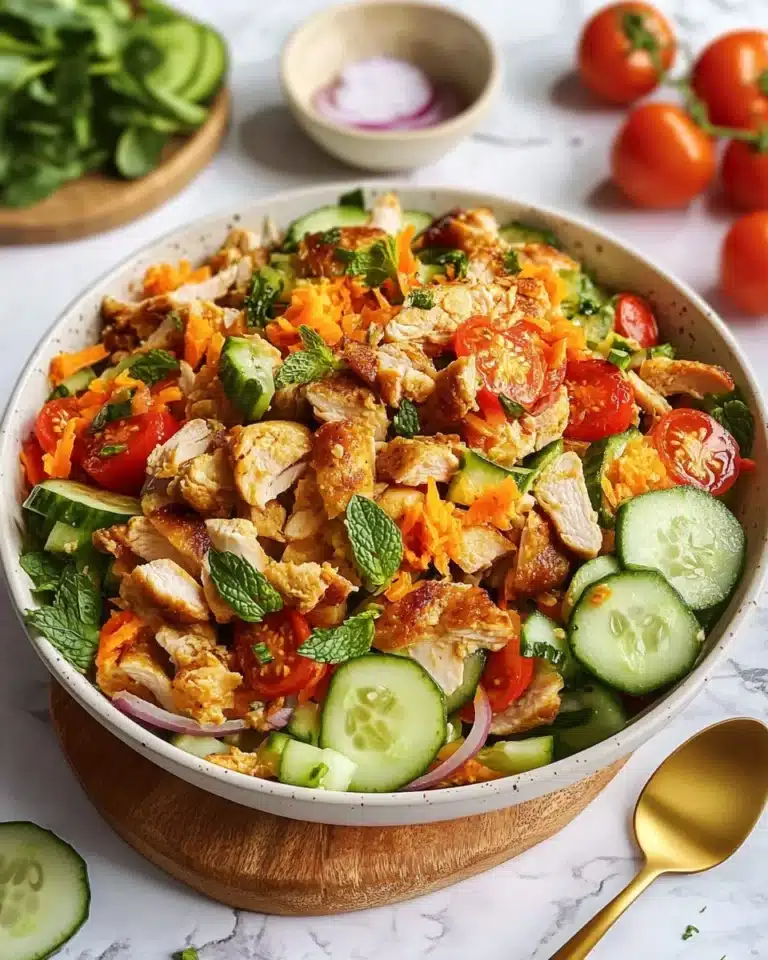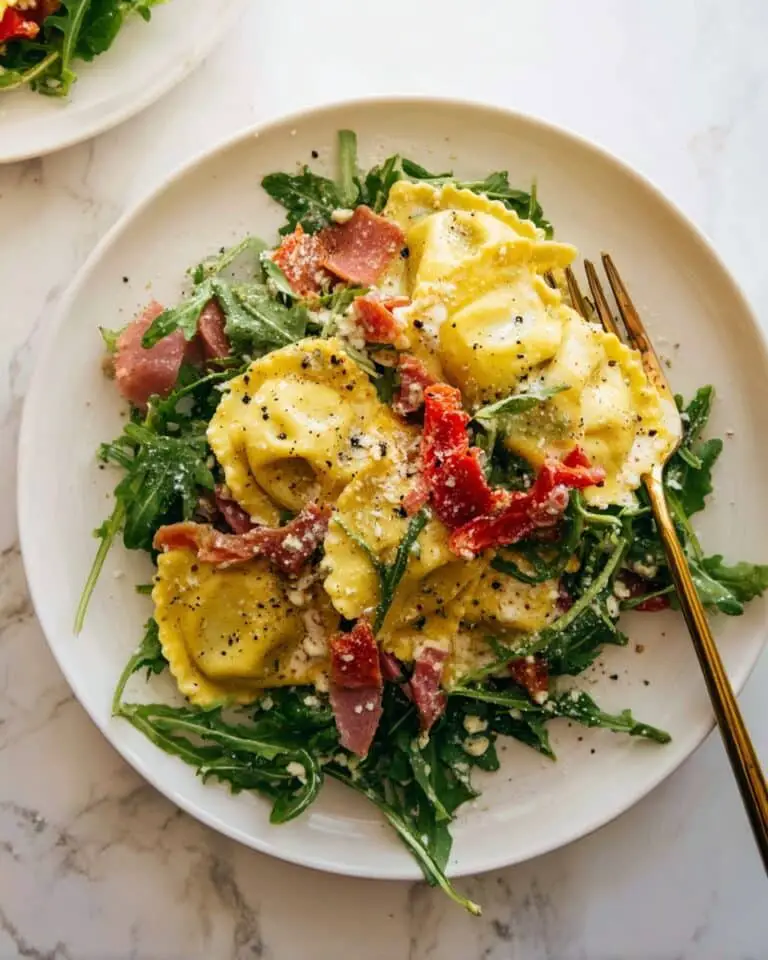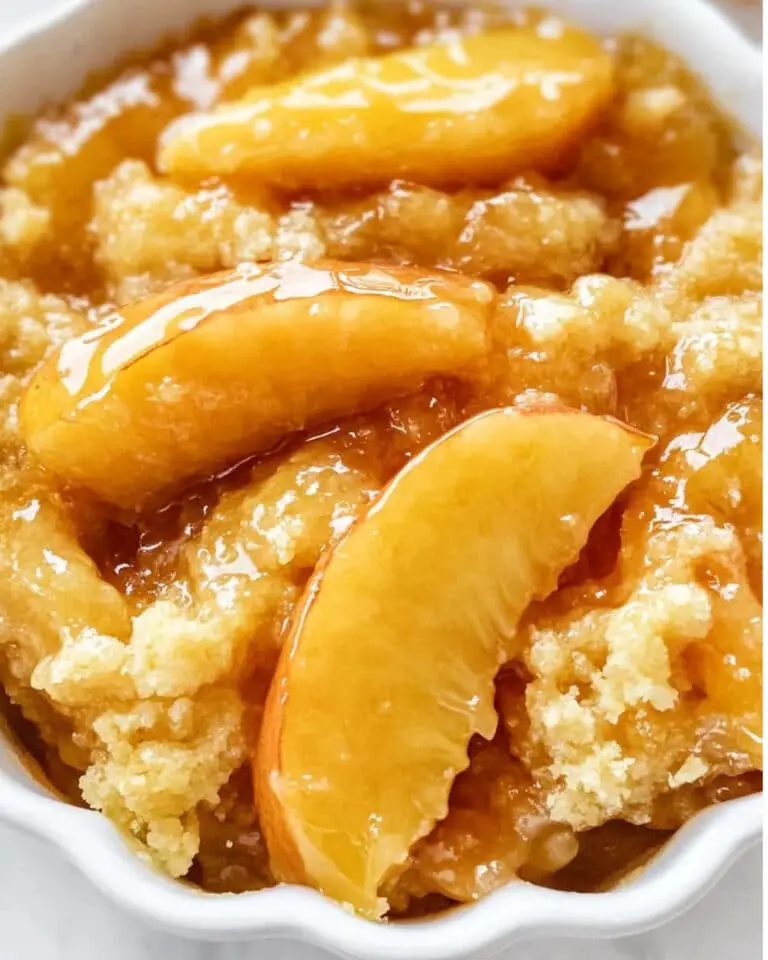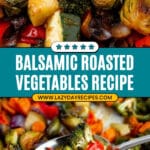If you’re craving a simple, yet wildly flavorful vegetable side, this Balsamic Roasted Vegetables Recipe is one of my go-to dishes that never disappoints. I absolutely love how the mix of sweet maple syrup and tangy balsamic vinegar brings out such a rich, caramelized depth in every bite. Trust me, once you try this, your family will be asking for it again and again—and it’s so easy that you’ll want to keep it in your weekly rotation.
Why You’ll Love This Recipe
- Bursting with Flavor: The balsamic and maple combo creates a perfect sweet-tart glaze that elevates everyday veggies.
- Super Versatile: You can swap veggies based on what’s fresh or your favorites—no strict rules here!
- Easy Prep and Cleanup: Toss everything in one pan and pop it in the oven—minimal fuss, maximum yum.
- Great for Meal Prep: Make a big batch and use leftovers for lunches or quick dinners throughout the week.
Ingredients You’ll Need
These vegetables not only roast beautifully, but they also create a wonderful texture mix once glazed with our balsamic dressing. I recommend picking fresh, firm veggies for the best taste and consistency.
- Zucchini: Adds a tender bite and absorbs flavors wonderfully—make sure it’s firm, not mushy.
- Bell Peppers: Any color works, but I love the sweetness from red or yellow peppers here.
- Brussels Sprouts: Halve them to get crispy edges and a tender inside.
- Portabella Caps: Their meaty texture brings heartiness to the mix.
- Broccoli: Adds color and crunch; break into bite-sized florets.
- Salt: Essential for balancing the sweetness and enhancing the veggie flavors.
- Olive Oil: Use a good quality one—it helps everything roast evenly and adds richness.
- Maple Syrup: Gives a sweet glaze with a subtle depth—can’t substitute with plain sugar for the same effect.
- Balsamic Vinegar: The star ingredient for that signature tangy and slightly sweet flavor.
- Garlic Powder: Adds a gentle punch without overpowering the veggies.
Variations
I like to keep this recipe flexible depending on the season or what I have on hand. Feel free to swap in different vegetables or tweak the glaze for your cravings—the possibilities are pretty much endless!
- Vegetable Swaps: I’ve used sweet potatoes or butternut squash for a heartier fall version, and it’s always a hit.
- Herbs Boost: Throw in rosemary or thyme for an herby twist that adds aroma and complexity.
- Spice It Up: Adding a pinch of red pepper flakes gives it a nice kick without overpowering the natural veggie sweetness.
- Vegan and Gluten-Free Friendly: The recipe is naturally friendly for these diets—just double-check any pre-made dressings if you add them.
How to Make Balsamic Roasted Vegetables Recipe
Step 1: Prep Your Oven and Vegetables
Go ahead and preheat your oven to 400°F (200°C). While it’s warming up, wash your veggies thoroughly. Slice the zucchini and bell peppers into bite-sized pieces, halve the brussels sprouts, chop the portabella caps, and break the broccoli into small florets. You want a nice variety of shapes and textures, all adding up to about 8 cups of mixed veggies.
Step 2: Toss and Glaze
Place the veggies in a large 9×13 inch baking dish—something like a lasagna pan works perfectly. In a small bowl or container, whisk together the olive oil, balsamic vinegar, maple syrup, garlic powder, and salt. Pour this gorgeous dressing over the veggies and toss everything gently but thoroughly so each piece is well-coated. This step is key for achieving that perfect caramelized finish.
Step 3: Roast and Stir
Pop your veggies in the oven and roast for 45 minutes at 400°F. Every 15 minutes, pull them out and give them a good stir—this keeps everything cooking evenly and helps prevent any pieces from getting too charred. If your kitchen smells amazing after the first 15 minutes, that’s a sign you’re on the right track!
Step 4: Serve and Enjoy
Once your balsamic roasted vegetables are tender and caramelized, remove them from the oven. They’re fantastic served over warm rice, tossed into pasta, or simply as a side dish alongside your favorite protein. I love how they add a pop of color and flavor to any plate.
Pro Tips for Making Balsamic Roasted Vegetables Recipe
- Even Veggie Sizes: Cutting your veggies into similar-sized pieces helps everything cook evenly and avoids overcooked or undercooked bites.
- Don’t Skip Stirring: Stirring every 15 minutes is a game-changer—it keeps them from sticking and ensures a perfect roast all around.
- Use Good Balsamic Vinegar: A decent quality balsamic really shines here and prevents the flavor from tasting too harsh or sour.
- Maple Syrup Magic: I learned that the maple syrup not only sweetens but also helps with the beautiful browning—don’t substitute it with plain sugar.
How to Serve Balsamic Roasted Vegetables Recipe
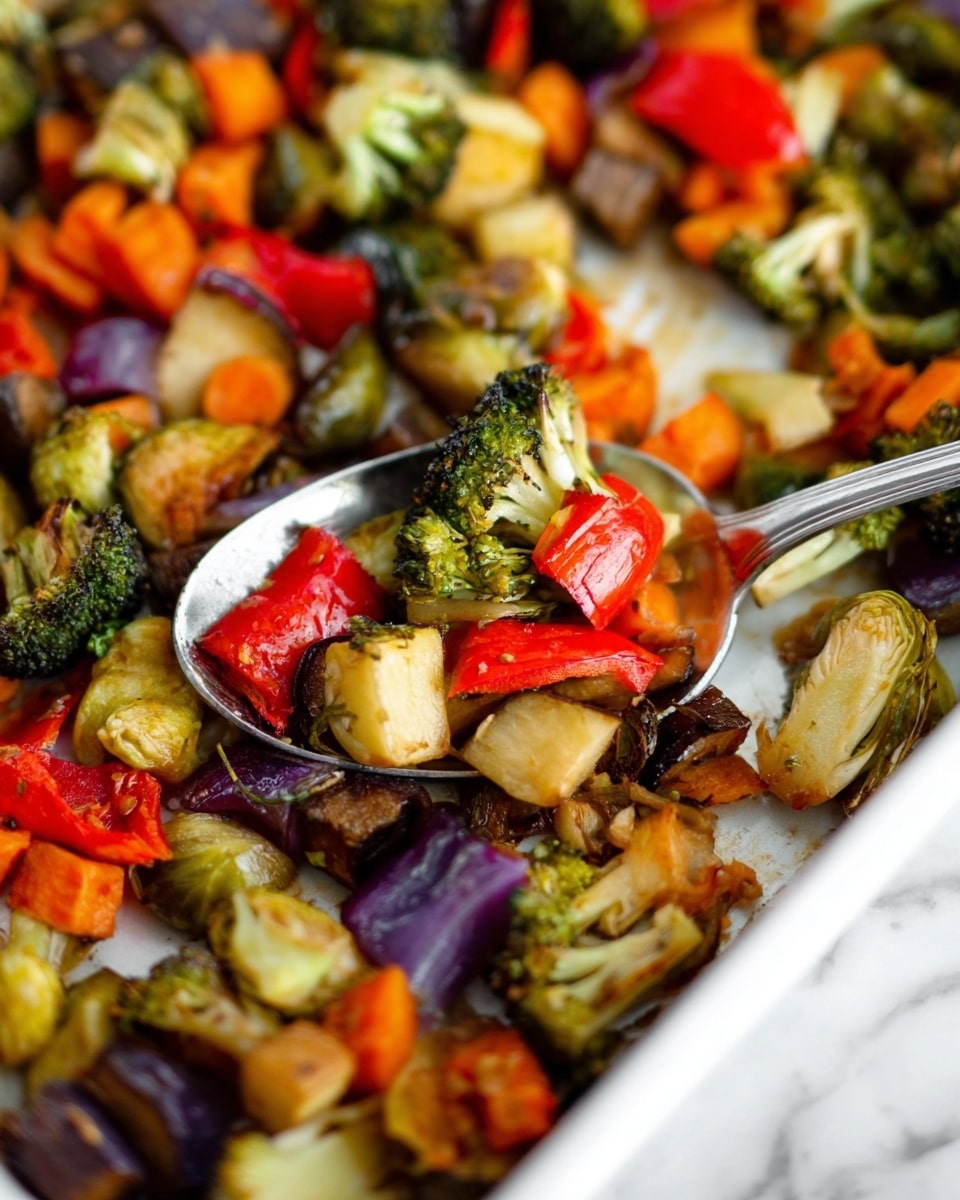
Garnishes
I usually sprinkle some freshly chopped parsley or basil on top to brighten up the dish visually and flavor-wise. A little crumbled feta or shaved Parmesan also pairs beautifully if you’re not keeping it vegan.
Side Dishes
This recipe pairs wonderfully with roasted chicken, grilled fish, or even as a hearty topping for quinoa or couscous. Some days, I serve it alongside warm garlic bread or a simple grain salad for a full-on veggie feast.
Creative Ways to Present
For dinner parties, I like to pile the balsamic roasted vegetables into a rustic serving bowl and drizzle a little extra balsamic glaze over the top just before serving—it makes for a stunning and appetizing centerpiece that always gets compliments.
Make Ahead and Storage
Storing Leftovers
I store leftovers in an airtight container in the fridge for up to 4 days. The flavors actually deepen overnight, so the next day’s meal often tastes even better. Just make sure to cool them before sealing to avoid condensation.
Freezing
I’ve frozen roasted veggies before with decent results. Portion them out into freezer-safe bags or containers, then thaw overnight in the fridge before reheating. They lose a bit of their crispness but still taste delicious.
Reheating
When reheating, I prefer popping the veggies back into a hot oven or air fryer for a few minutes to revive that lovely roasted texture instead of microwaving, which can sometimes make them soggy.
FAQs
-
Can I use other vegetables in this Balsamic Roasted Vegetables Recipe?
Absolutely! This recipe is very flexible. Feel free to add carrots, sweet potatoes, cauliflower, or any veggies you love. Just be mindful of cooking times—root veggies might take a bit longer to roast.
-
Is this recipe vegan and gluten-free?
Yes! The ingredients are naturally vegan and gluten-free. Just double-check your balsamic vinegar and maple syrup brands to ensure they haven’t added any non-vegan ingredients.
-
How can I make these vegetables crispier?
To get crisper edges, make sure the veggies are spread out in a single layer in the baking dish. Stirring every 15 minutes as instructed also encourages even caramelization and crisping.
-
Can I prepare the vegetables ahead of time?
Yes, you can chop and toss the veggies in the glaze a few hours ahead and refrigerate until ready to roast. Just bring them to room temperature before baking to ensure even cooking.
Final Thoughts
This Balsamic Roasted Vegetables Recipe is one of those dishes that I’ve come back to again and again because it’s simple, reliable, and always so delicious. Every time I make it, I’m reminded how much depth and sweetness balsamic and maple syrup can bring to humble vegetables. Give it a try—you’ll enjoy how easy it is to feel like you’re treating yourself while still keeping things healthy and vibrant. Consider me your biggest cheerleader for roasting veggies this way!
Print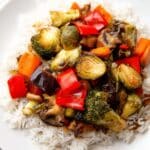
Balsamic Roasted Vegetables Recipe
- Prep Time: 10 minutes
- Cook Time: 35 minutes
- Total Time: 45 minutes
- Yield: 4 servings
- Category: Side Dish
- Method: Baking
- Cuisine: American
- Diet: Vegetarian
Description
A vibrant and flavorful recipe for Balsamic Roasted Vegetables featuring a delicious maple-balsamic glaze. This easy-to-make dish combines zucchini, bell peppers, brussel sprouts, portabella mushrooms, and broccoli roasted to perfection, making it a perfect side or topping for rice and pasta.
Ingredients
Vegetables
- 2 cups zucchini, sliced
- 2 cups bell peppers (any color), sliced
- 1 cup Brussels sprouts, halved
- 1 cup portabella cap, sliced
- 1 cup broccoli florets
Seasoning & Dressing
- 1/2 teaspoon salt (divided)
- 1/4 cup olive oil
- 2 tablespoons maple syrup
- 2 tablespoons balsamic vinegar
- 1/4 teaspoon garlic powder
Instructions
- Preheat Oven. Preheat your oven to 400°F (200°C) to prepare for roasting the vegetables.
- Prepare Vegetables. Wash all vegetables thoroughly and slice them accordingly to yield a total of 8 cups of mixed veggies including zucchini, bell peppers, Brussels sprouts, portabella mushrooms, and broccoli florets.
- Arrange Vegetables. Place all the chopped vegetables into a large 9×13-inch baking pan suitable for roasting.
- Make Dressing. In a small bowl, whisk together olive oil, balsamic vinegar, maple syrup, garlic powder, and half of the salt (1/2 teaspoon total salt is divided, use 1/4 teaspoon here) to create a flavorful dressing.
- Toss Vegetables. Pour the dressing evenly over the vegetables in the pan and toss well to ensure all pieces are coated thoroughly.
- Roast Vegetables. Place the baking pan in the preheated oven and roast for 45 minutes total, stirring the vegetables every 15 minutes to promote even cooking and caramelization.
- Serve. Once roasted and tender, serve the balsamic roasted vegetables as a delightful side dish or over rice or mixed with pasta for a complete meal.
Notes
- An easy and tasty recipe for maple-glazed balsamic roasted vegetables, perfect for enhancing any meal.
- Stirring every 15 minutes ensures vegetables roast evenly and develop a nice caramelized texture.
- You can customize the vegetable selection based on seasonality or preference.
- Leftovers store well in the refrigerator for up to 3 days and can be reheated in the oven or microwave.
Nutrition
- Serving Size: 1 cup
- Calories: 210 kcal
- Sugar: 13 g
- Sodium: 607 mg
- Fat: 14 g
- Saturated Fat: 2 g
- Unsaturated Fat: 12 g
- Trans Fat: 0 g
- Carbohydrates: 19 g
- Fiber: 4 g
- Protein: 3 g
- Cholesterol: 0 mg

